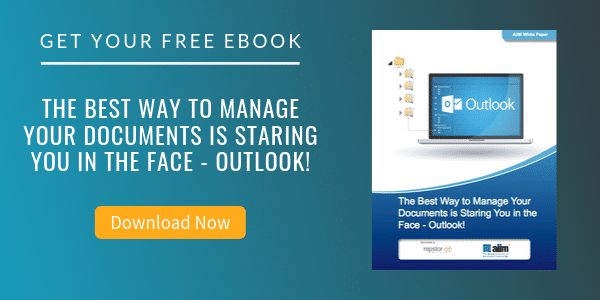
5 Myths about Paperless Office That Hinder Document Management Software Adoption
Document Management | Paperless Office
Isn't it ironic that with advancing technology, we are quick to spend on 'cool' gadgets for personal use though they do not yield any financial return in most cases, but we are reluctant to invest in technology that is proven to yield a return in the short-to-medium term? This also holds true when it comes to moving a business to the paperless model. Let us look at five myths about paperless offices that prevent organizations from adopting electronic document management, and consequently miss out on the benefits that such technology brings.
Myth #1: Dedicated IT staff are required to maintain a DMS application.
Reality -- This is fast becoming a thing of the past. Modern software applications can be simple to install and easy to maintain. Today’s document management software is designed on a task-based model. That means software developers place themselves in your shoes and learn what organizations want from the solution. What comes out is a solution that you can deploy, use, and manage by yourself.
Myth #2: Employees will resist the move.
Reality -- Well, employees will certainly be wary at first. They have been working with paper for years and are comfortable with the system. But the first time they find a document in seconds, they will begin to appreciate the system. Additionally, electronic document management systems make business processes more structured. This means your staff will quickly find themselves more efficient than before. Paper-centric processes tend to take the focus off the result and shift it to the process. If there is one thing that electronic document management does, it puts the focus back to where it belongs - results.
Myth #3: Managing documents electronically is less secure than paper-based processes.
Reality -- Controlling access to paper-based documents is possible only by locking filing cabinets and restricting entry to rooms that house document archives. How many filing cabinets would you unlock in a day if you needed to retrieve a couple of dozen documents? And almost every time you retrieve a document, you would need to file it back and lock the cabinet. So long as the cabinet is unlocked or open, all files and documents are together accessible to those around. Document management software replaces this cumbersome and unsecure process with document-level access control, using passwords, document encryption, assigning of permission-based roles to users, etc. This almost guarantees that your documents, folders, and indeed the entire document management system stay secure from unauthorized access and use.
Myth #4: ROI can be achieved only in the long term.
Reality -- As you make the switch from paper-based processes to digital processes, gains from time savings and improved efficiency can be immediate. Apart from this, your need for paper as well as related consumables, cabinets, storage space, etc. will fall significantly. This will result in huge cost savings. Although putting in place a document management system means you need to invest in a scanner and document management software, you could recover it in a matter of months.
Myth #5: Paper use must be totally eliminated to achieve a paperless office.
Reality -- The move to a paperless office is always a gradual one. No doubt, minimizing paper consumption is one of the milestones on the road to achieving a paperless office, but the bigger gains are made through electronic document management and process automation. There will always be certain documents that are required by applicable laws to be in paper form. Electronic document management helps you reduce paper consumption significantly so that managing the few documents that are left in paper form hardly takes any effort.
Now that these myths have been dispelled, here are five steps to going paperless…
- Determine the size of your paper-based document archive
- Study the work processes in your organization
- Invest in and roll out document management software to match these needs
- Digitize your paper archive by scanning the documents
- Organize documents to make them easily retrievable and design workflows to expedite business processes.
Adopting the above five steps will ensure that you do not miss out on these technological advances made in the area of business management. The coolest gadget in town will now be your office laptop or PC!
About John Mancini
John Mancini is the President of Content Results, LLC and the Past President of AIIM. He is a well-known author, speaker, and advisor on information management, digital transformation and intelligent automation. John is a frequent keynote speaker and author of more than 30 eBooks on a variety of topics. He can be found on Twitter, LinkedIn and Facebook as jmancini77. Recent keynote topics include: The Stairway to Digital Transformation Navigating Disruptive Waters — 4 Things You Need to Know to Build Your Digital Transformation Strategy Getting Ahead of the Digital Transformation Curve Viewing Information Management Through a New Lens Digital Disruption: 6 Strategies to Avoid Being “Blockbustered” Specialties: Keynote speaker and writer on AI, RPA, intelligent Information Management, Intelligent Automation and Digital Transformation. Consensus-building with Boards to create strategic focus, action, and accountability. Extensive public speaking and public relations work Conversant and experienced in major technology issues and trends. Expert on inbound and content marketing, particularly in an association environment and on the Hubspot platform. John is a Phi Beta Kappa graduate of the College of William and Mary, and holds an M.A. in Public Policy from the Woodrow Wilson School at Princeton University.



